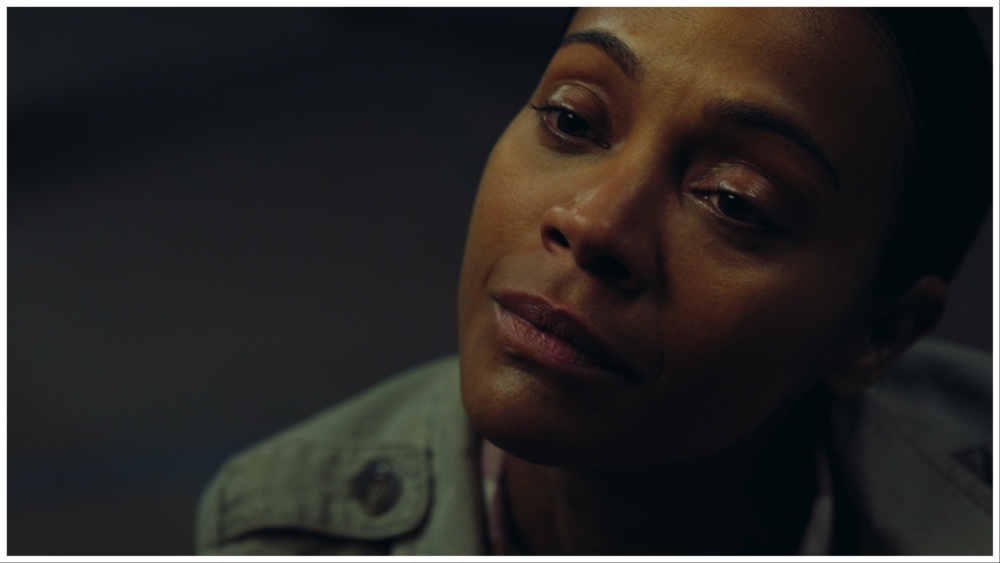Zoe Saldana Talks Playing an Illegal Immigrant in Marco Perego’s Border Thriller ‘Absence of Eden’
When Variety talks to Zoe Saldana and her husband, the artist and film director, Marco Perego, they’ve only just arrived in Taormina and are in the process of unpacking. Room service arrives and Zoe apologizes about having to tuck into the salad straightaway. They’re here attending the world premiere of Perego’s debut film as a director, “The Absence of Eden,” a drama that takes place in the murky world of the U.S.’s southern border, a hellish landscape inhabited by Coyotes, ICE officers, desperate immigrants and refugees.
It’s a universe away from the Pandora of the “Avatar” pictures or the science fiction blockbusters “Star Trek” and “Guardians of the Galaxy” Saldana is more usually associated with. “When I was picked for those films, I had no idea they were going to become franchises. I thought it was going to be a one and done kind of thing. I hold all of those films responsible for any kind of global notoriety I may have. However, it’s time consuming. Between ‘Star Trek,’ ‘Guardians’ and ‘Avatar,’ I had solid work for over 10 years. As I became an asset that had a certain value in this industry, I could turn that to films like this.”
For Perego, the film represents a continuation of his work as an artist, which he began in 2016 with a series of sculptures of children’s shoes filled with concrete to represent children fleeing from Syria to Italy. “I saw a universal question about humanity. After the sculpture, I wanted to complete the conversation about humanity and that’s why I wrote this film.”
“My family’s from the Caribbean,” Saldana tells Variety. “So our wave of immigration was from the east side of the States, from the Atlantic. It was a different experience. My grandmother immigrated for political purposes. Right after the assassination of Rafael Trujillo in the Dominican Republic, a lot more visas were granted to Dominicans. She arrived in ‘61. The conversation of immigration has always been a universal conversation in my life.”
Although the film began as part of an art project, the politics of the situation is inescapable. Saldana says, “I think invisible lines create a lot of judgement and division between us as a human race. And it pains me. I’m a proud Latina, I’m proud Afro-Caribbean. And it pains me to know my community is judged much more harshly than other communities, when in reality, Latinos compose a great fucking portion of the American economy. And they’re, and you were over-exceeding, in so many economic regions, like we’re, you know, our children are enlisting into the military quicker than any other community. We are buying our own homes. We’re borrowing from banks, starting our own businesses and enrolling in school at a much higher rate than so many communities in America, and yet the narrative of us in the news and media is negative.”
The film is bold, both visually and in terms of the direction of its narrative. It offers some hope and the possibility of growth but Perego does not shy away from the harsh realities he discovered in his two years of research across the border with the help of cross-border activist and founder of This Is About Humanity, Elsa Collins. At the same time it was important for him to maintain his perspective as an artist. “Originally I was researching this for a sculpture. I was thinking of the Garden of Eden with Adam and Eve and no God. But then it became this movie and although I don’t like to explain art, there’s the palette in there: the red, white and blue of the American flag. There are the images in the film where the immigrants sit down like a Goya painting and I did that so that there was a beauty in there, a humanity.”
As a debut filmmaker Perego started by watching an online masterclass by Martin Scorsese and by the end of the production, Scorsese was on board as an executive producer. “Martin and [Scorsese’s film editor] Thelma Schoonmaker gave me notes, and now I pinch myself when I see his name on my movie.” For Saldana, as well as the humanitarian message, there was also the opportunity to stretch her acting skills in different directions. “Instead of me being overlooked as “oh, she just does action movies. And she’s green and she’s blue.” I wanted to know what it was like to keep pushing, because before I walk away, and I just become a soccer mom, which I’m gonna gladly accept, I want to see if I have it in me to be in these kinds of films.”

